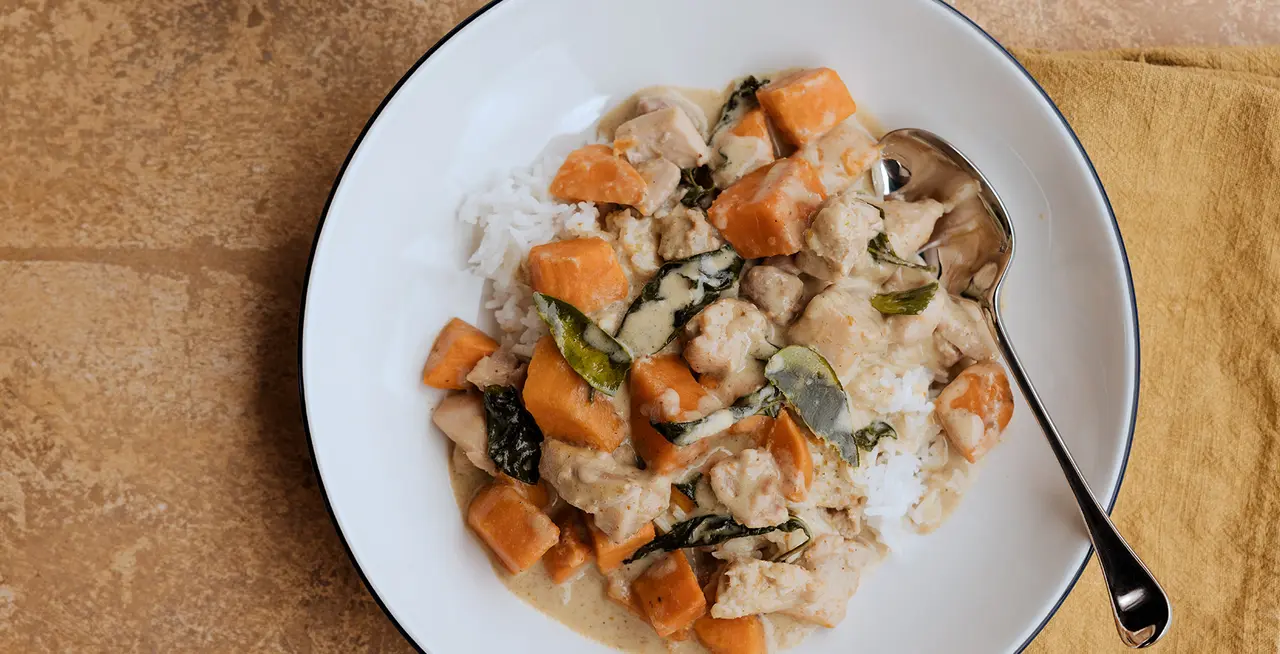Curry can take many different forms and include hundreds of different ingredients, depending on what region or country you’re in. Chef Anita Jaisinghani, chef-owner of Pondicheri Café in Houston, Texas, has provided some background information and a guide to creating your own curry at home.
The following is an excerpt from Chef Anita Jaisinghani’s new cookbook, “Masala: Recipes from India, the Land of Spices.”
What Is Curry?
The word curry has had its share of controversy over the years. In 1974, celebrated Indian cookbook writer Madhur Jaffrey wrote that the word “curry” was as degrading to India’s great cuisine as “chop suey” was to China’s. In 2003, she went on to publish a book, The Curry Bible: an indication of how much currency the word had gained. Food bloggers have tried to start a trend to cancel the word, claiming that it is an offensive blanket term to describe any Southeast Asian dish with gravy or stew. While at first, I also rebelled against the use of the word, twenty years in the restaurant business and I have come to accept it. The word is here to stay.
The truth is that curry is neither a spice nor a spice mix. It’s just a sauce with spices in it. The British borrowed the term curry from the Portuguese, who described caril or caree as any broth or gravy that Indians made with butter, nuts, vegetables, and a multitude of spices. In an attempt to capture the overwhelming variety of “broths,” the English classified curries as Bombay, Ceylon, or Madras. This broad categorization missed the subtle variations and nuances of each preparation across the many kitchens of India.
To the British, curry was not just a term that described an unfamiliar Indian approach to food, but a dish in its own right created for the British in India. Outside of restaurants, the word curry is practically nonexistent among Indians. There are specific names for broths, braises, and stews, which cannot be simplified as just a curry. Curry powder, a commercially prepared mix of spices (mostly turmeric, cumin, and coriander), is a Western notion dating to the eighteenth century. It was first prepared and sold by Indian merchants to members of the British Colonial government and army returning to Britain.
No self-respecting Indian cook uses curry powder, or none that I know. If you have any in your pantry, throw it out unless it is fresh and well-sourced. Or better still, make your own fresh curry powder. Indians may use upward of ten spices in one dish, but they are all added individually and at different times in the preparation. They may be used whole, ground, toasted, crushed, or just popped in oil to release flavor.
Curry has traveled the globe. From Africa to the Caribbean to Fiji and other Pacific islands, curries are common fare. Japanese train stations and shopping malls have stands selling curry and rice and here in the United States, the popularity of curries just keeps rising.
Curry Chart
This is a basic guide to making a homemade curry. Use this chart to learn how to build layers of flavor and create your own curries. First, decide on your main ingredient and how much time you have: vegetables make for a quick-cooking dish, while bone-in meats take longer to cook. There are endless variations, and this chart is simply meant to be a starting point to create your own curries.
Step 1: Heat the Fat
Pick one: Ghee, olive oil, coconut oil, sesame oil, mustard oil
Step 2: Pop the Spices
Pick one or a combination of the following:
Cumin seeds, mustard seeds, coriander seeds, fennel seeds, fenugreek seeds
Step 3: Add Whole or Lightly Crushed Spices
Pick one or a combination of the following (optional):
Green cardamom, black peppercorns, coriander seeds, cloves
Step 4: Add the Kari Leaves (optional)
Step 5: Sauté the Alliums
Add one of the following and cook until translucent or softened:
Minced onions or leeks
Or add caramelized onion puree
Optional: Asafetida can be used to replace or intensify the onion and garlic flavor
After the onions are nearly cooked, add minced garlic
Step 6: Add Ground Spices
Add the desired ground spices:
Turmeric, ground cumin, ground coriander, red chile powder
Step 7: Choose Main Ingredient(s)
Add one of the following right away:
Vegetables, such as carrots, squash, potatoes, or eggplant
Fish fillets, chunks, or steaks
Dark-meat chicken pieces (bone-in or boneless)
Meat chunks (bone-in or boneless)
Step 8: Stir in an Acid
Once the main filling is nearly cooked, add: Chopped or pureed tomatoes (canned or fresh) and/or plain whole-milk yogurt
Step 9: Add Creaminess and Thickness (optional)
Pick one or a combination: Coconut milk, heavy cream, toasted ground nuts
Step 10: Mix in Aromatic Spices
Pick one or a combination of the following: Garam Masala, ground cardamom, cinnamon, cloves, mace
Step 11: Add Quick-Cooking Green Vegetables (optional)
Cook until just wilted: Peas, spinach, kale, watercress, collard greens
Step 12: Turn the Heat Off
Step 13: Finish with Bright Flavor
Pick one: Lime juice, lemon juice, a sprinkle of amchur (dried mango powder)
Step 14: Fold in or Garnish with Aromatic Herbs
Add one or a combination of the following: Cilantro, basil, mint, thyme, sage, parsley
Reprinted with permission from Masala: Recipes from India, the Land of Spices by Anita Jaisinghani, copyright© 2022. Photographs copyright © 2022 by Johnny Autry. Published by Ten Speed Press, an imprint of Penguin Random House.
Shop on Bookshop.org or Amazon























